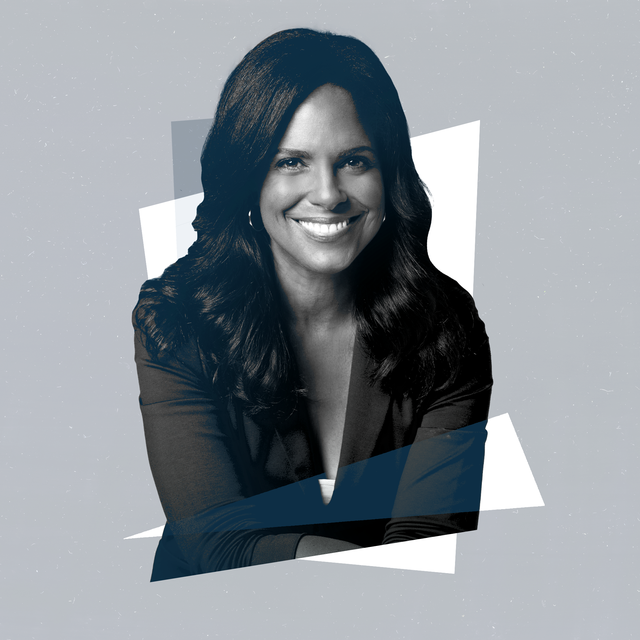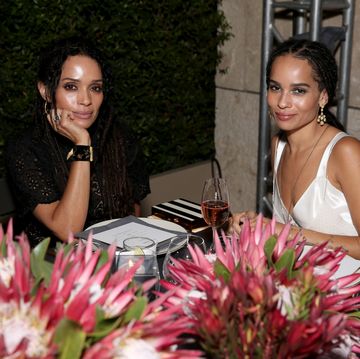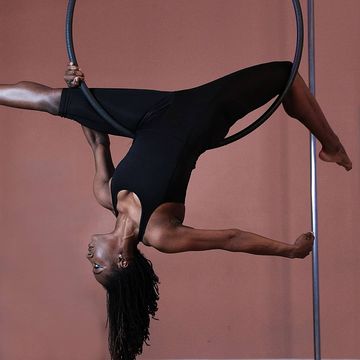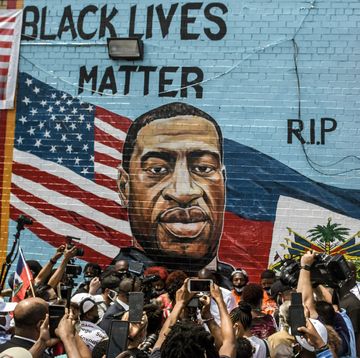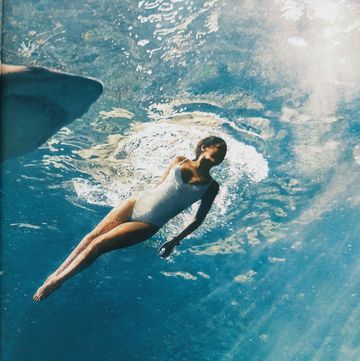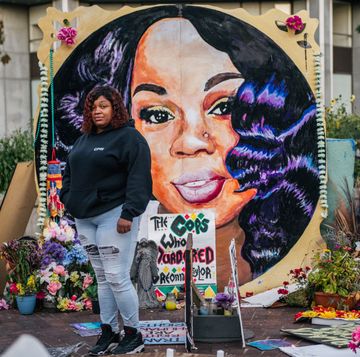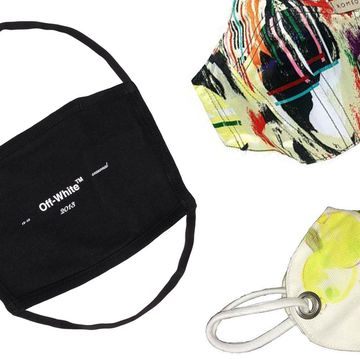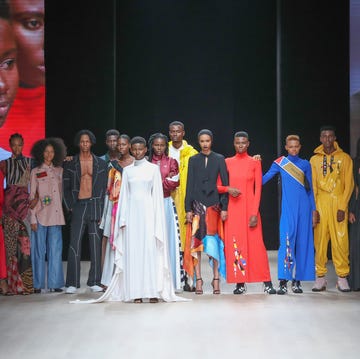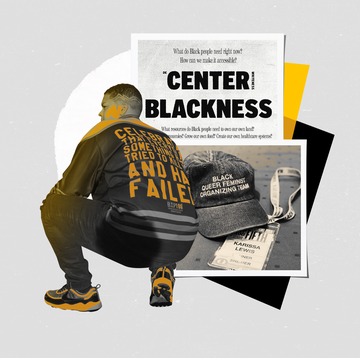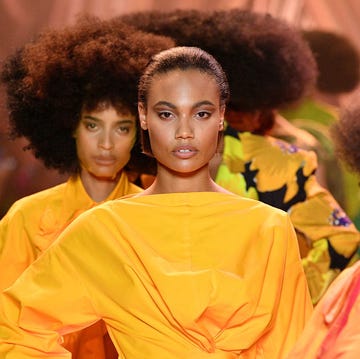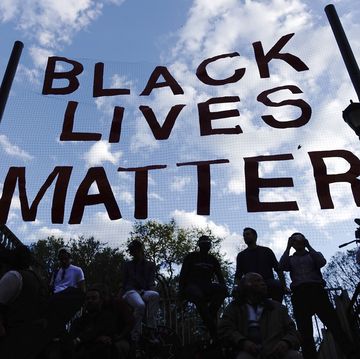Soledad O'Brien has long been one of journalism's most unapologetic voices. While it may seem as if the world has only just woken up to the realities of systemic racism following global, ongoing Black Lives Matter protests in the wake of George Floyd's murder last year, for O'Brien, this is nothing new. Whether anchoring CNN's American Morning, hosting her docuseries Black in America, or running her own production company, Soledad O’Brien Productions, the veteran reporter and an award-winning journalist has dedicated her career to shedding light on the injustices that plague Black and Brown Americans.
Now, with her new investigative series, Disrupt & Dismantle, airing on BET, O'Brien is taking a deeper dive into how structural racism works in America. Produced by Soledad O'Brien Productions, the series doesn't merely spotlight ongoing instances of racism across the nation; it begs the questions: Why is racism happening in the first place, and how has it managed to run rampant among our society for so long? Over six episodes, O'Brien calls out the antiquated systems within our local and federal governments that allow racist practices to continue to thrive, and in true O'Brien fashion, she has the reporting to back it up.
"I've spent a lot of my career covering conversations about race, and class, and racism, and injustice, and bias," O'Brien tells BAZAAR.com. "When we were sitting around coming up with ideas for the series that we would want to watch, one thing we kept coming back to was, What are the solutions? How do you explain to people what's happening in ways that connect the dots?"
And connect the dots, she does. While other shows may focus on news stories about the racism of today, O'Brien plans to dig deeper, explaining the historical context of modern racism. "I often think when we talk about racism, when we talk about structural racism or environmental racism, people almost roll their eyes like, 'Come on, haven't we been through this?'" she says. "I think it's because we, the media, generally fail to connect the dots. It's not a, 'So let's take you back to the 1940s [sort of situation].' Instead, it's, 'Let's take you back to last week.' We wanted to see if we could create content that would, number one, really tell the story about racism in today's terms, but connected to the past—what's unfolding today and use that as an opportunity to explain it."
It was imperative for O'Brien that the stories featured in Disrupt & Dismantle didn't just expose the problems affecting Black and Brown communities, but that they also provide solutions—or at least a start. "This idea of, 'For the next hour, I'm just going to give you a litany of problems. Good luck!'—it seems to be not only disappointing to me, but also it doesn't seem to be particularly helpful," she says.
"I want to be able to help people understand ways in which key things are actually being fought against. … We want to move it into the past, but very present stories about very specific [issues] today. Real people who you can identify with. These are not historical characters, these are real people. We also wanted to make sure we were highlighting solutions and people who were at least trying to tackle some of these very complicated problems."
Though O'Brien has been uplifting Black and Brown communities through her reporting for years, she recognizes that going into production in 2020—a year of reckoning, a year when a global pandemic unequivocally affected minority communities across the board—was fitting: There's no better time to reach viewers with the stark reality the series provides.
"There's no question for me that the killing of George Floyd opened a lot of eyes," she says. "I think for people of color, they were like, 'Yeah, this has been going on for a really long time. Where have you been?' I think for a lot of other people, people who would describe themselves as good people, who care about their communities, who don't see color, who love all people, would be like, 'Holy cow! I had no idea.' I know this because those people would tell me."
She adds that friends were reaching out to her in droves at the time, wanting to understand and learn more. "I think everybody reached out to their Black friend, and said, 'Can you explain this to me?'" she says. "The number of conversations I had with people, friends of mine who would say, 'I just don't understand,' sometimes it was frustrating—I'll be honest—because it felt like, one, I've done a lot of documentaries on this, but also, two, these are conversations that happen all the time in Black and Brown communities. They're well aware of these things."
What O'Brien is pleading for viewers to understand is that racism can permeate our world in the subtlest of ways. It can manifest in environmental racism and discriminatory zoning laws in ethnic neighborhoods, or even affect a Dallas, Texas grandmother demanding a literal mountain of discarded rooftop shingles be removed from her backyard. It can also impact the right to inhale clean air. And that's just the first episode.
"These stories are complicated and complex. These are stories that deal with history, and complications, and zoning, and red lining, and who's ignored what over time, how that's been allowed to happen," continues O'Brien.
The journalist touts Disrupt & Dismantle as some of her most compelling work yet, even compared to her often referenced, career-defining project Black in America for CNN years ago.
"In Black in America, we really took a snapshot of what's happening to the Black community today. It was really important, it hadn't been done, but now I think we're going a step further. Why is it the way it is? What happened historically? What exactly was red lining, and how did it affect these people here today? Maybe more importantly, what do you do about it? That I think is a very valuable add. I do look at this as the next iteration that asks some harder questions, and more complicated questions, and really pushes to connect the dots."
Future episodes of the series will tackle topics that she says the mainstream media have been reluctant to touch: issues like Black maternal mortality rates, the school-to-prison pipeline, and Black landowners fighting for the right to their own land in the Gullah region of South Carolina. Dismantle & Disrupt as a whole represents what the media landscape could and should look like, if it were to prioritize the stories of the minority communities that comprise the nation. Never shy to call out malpractice, irresponsibility, and, quite frankly, unjust news coverage, O'Brien says that she doesn't foresee the industry changing overnight, but she does hope her work on the series will kick-start the desire to highlight the voices that need to be heard most.
"I think my experience has been that media only changes when there's a financial imperative to change," she tell us. "I think that things will change because people are beginning to understand that, 'Wow! There are lots of people who are interested in stories about people of color'—that actually adding diverse voices does really well for your product. You get to avoid some of the really horribly, embarrassing mistakes we've seen lots of people make."
She adds, "I don't think there's going to be a kumbaya moment of, 'Well, it's just good to do.' Those things tend to die very early and very fast. I think it's, 'Oh, my God, did you see the audience for that? Did you see how many people watched it? Did you see the impact?' To me, that proves what we're doing is the right thing."
Disrupt & Dismantle airs Sundays at 8 p.m. EST on BET.
Bianca Betancourt is the culture editor at HarpersBAZAAR.com, where she covers all things film, TV, music, and more. When she's not writing, she loves impulsively baking a batch of cookies, re-listening to the same early-2000s pop playlist, and stalking Mariah Carey's Twitter feed.
